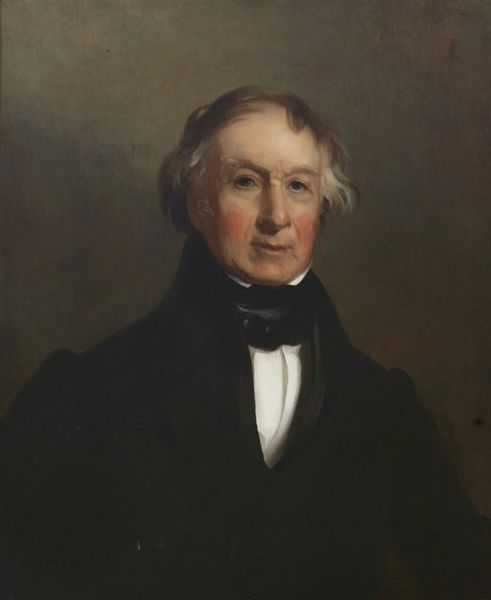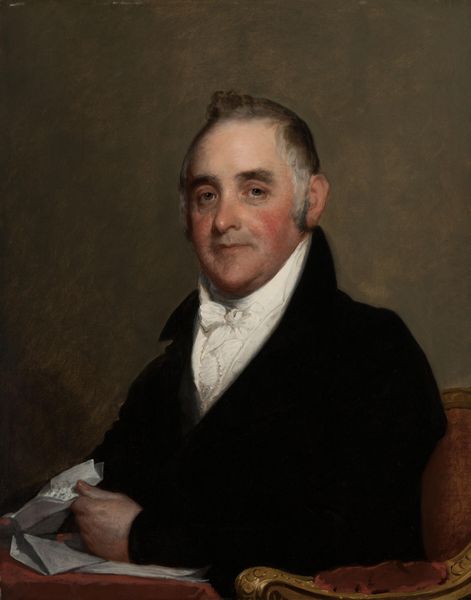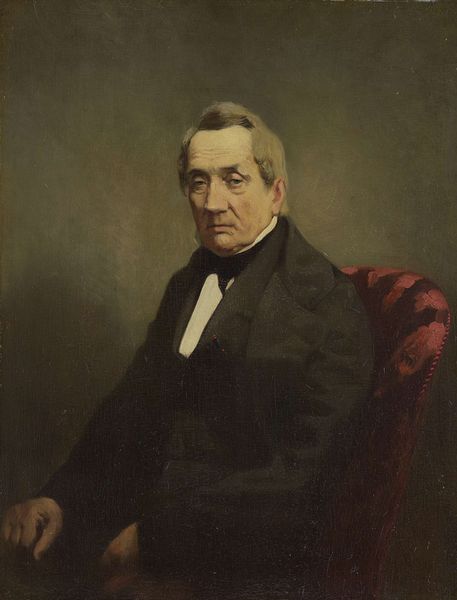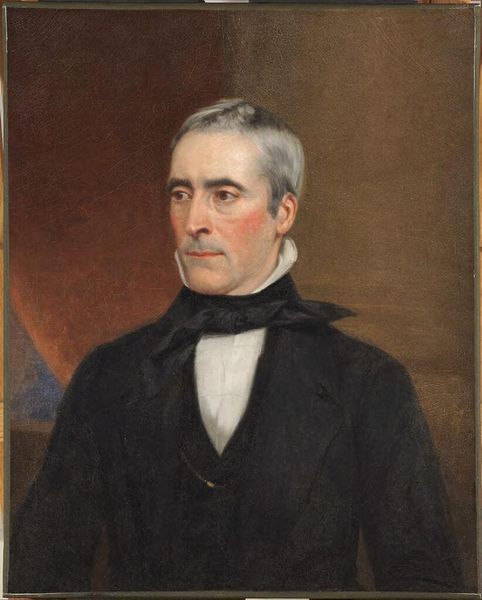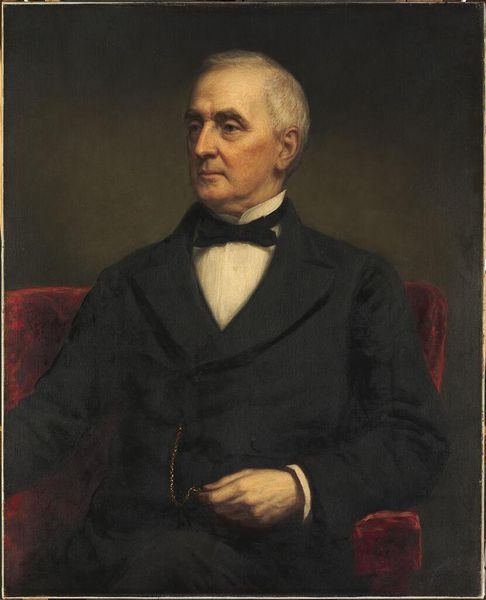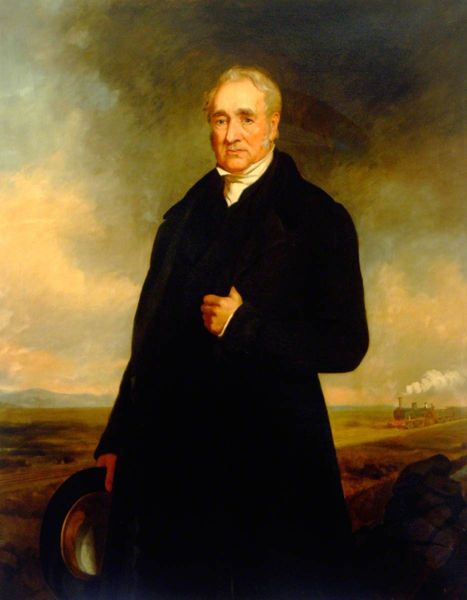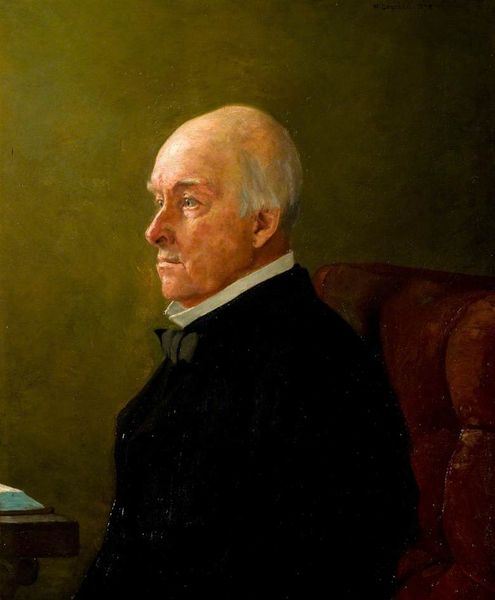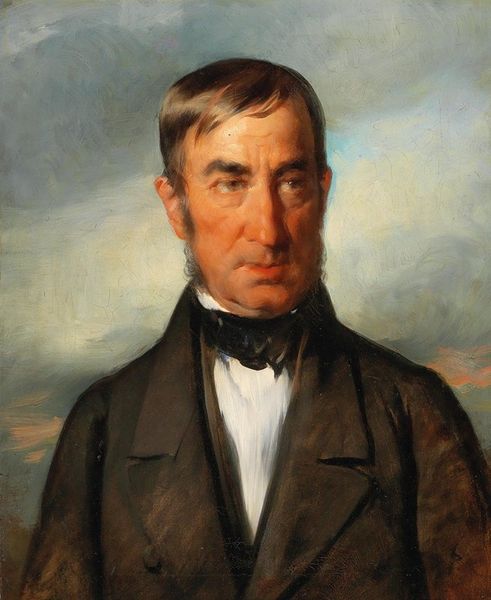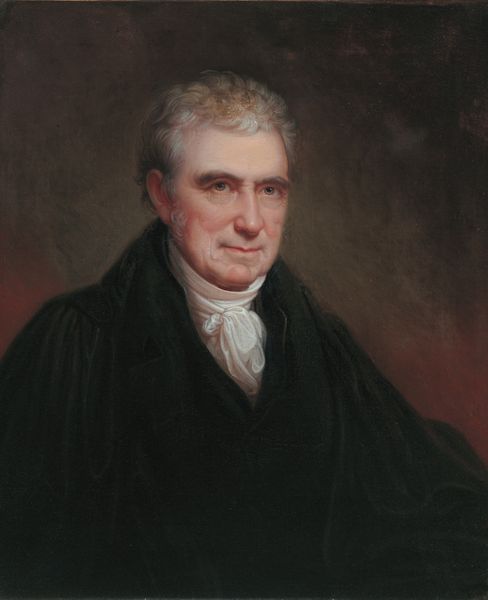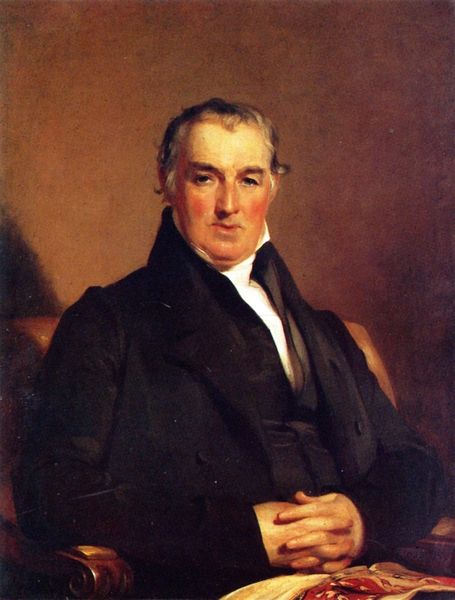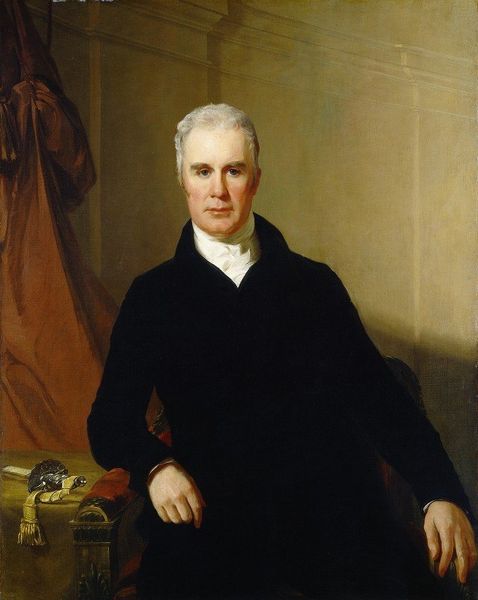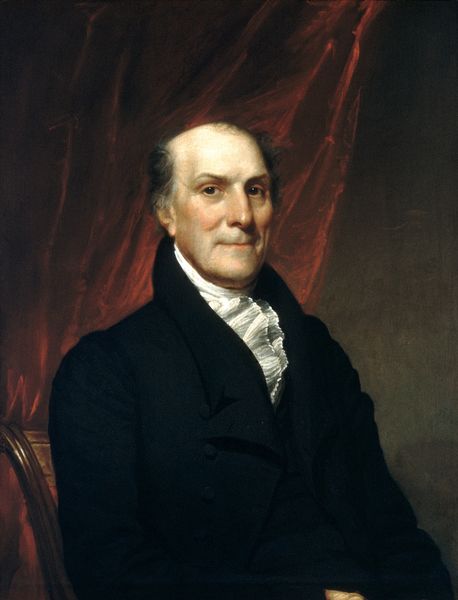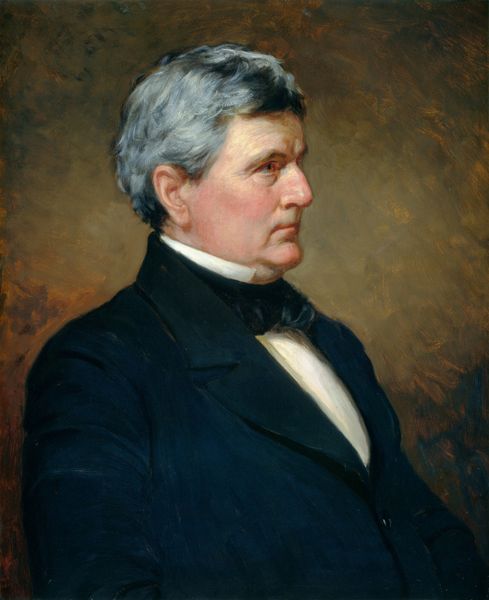
painting
#
portrait
#
figurative
#
portrait
#
painting
#
portrait reference
#
portrait head and shoulder
#
romanticism
#
animal drawing portrait
#
portrait drawing
#
facial portrait
#
academic-art
#
portrait art
#
fine art portrait
#
celebrity portrait
#
digital portrait
Copyright: Public Domain: Artvee
Curator: Thomas Sully painted this portrait of James Pollard Espy in 1849. Editor: It’s quite somber, isn't it? The subdued palette, the subject's serious expression. The stark black jacket dominates the composition. Curator: Indeed. But let’s consider Espy himself. He was a prominent meteorologist, advocating for understanding the forces that shape our environment, how consumption impacted weather, if you will. Editor: From a purely visual standpoint, the use of chiaroscuro really pulls the viewer's eye to his face. It's a textbook example of Romantic portraiture. Look at the loose brushwork around the edges, the focus is solely on the physiognomy and capturing a certain... gravitas. Curator: Sully, favored among elites for his ability to render both likeness and status, consciously framed Espy as an intellectual figure. He was well-known for public experiments: did Sully capture that popular fascination or overshadow it by turning him into yet another face of respectability? The cost of materials also reveals a particular social class afforded by the work. Editor: While social standing is certainly important, the artist’s intention also guides this. Observe how Sully uses light to model Espy's features, highlighting the intelligence in his eyes. It suggests an inner life, a depth of character—elements essential to portraiture regardless of social class. Curator: Certainly. Yet understanding who could commission, and who could afford, portraits like these deepens the artwork's implications beyond aesthetic appreciation. How many depictions were created that reflect a working class? Editor: That is indeed another aspect. But what strikes me is how Sully manages to convey not just likeness, but something of Espy's essence, through purely painterly means. Curator: Understanding these dimensions together can offer us a rich reading, seeing art as the production of things, as much as the vision of those things. Editor: An insightful complement to each other.
Comments
No comments
Be the first to comment and join the conversation on the ultimate creative platform.
